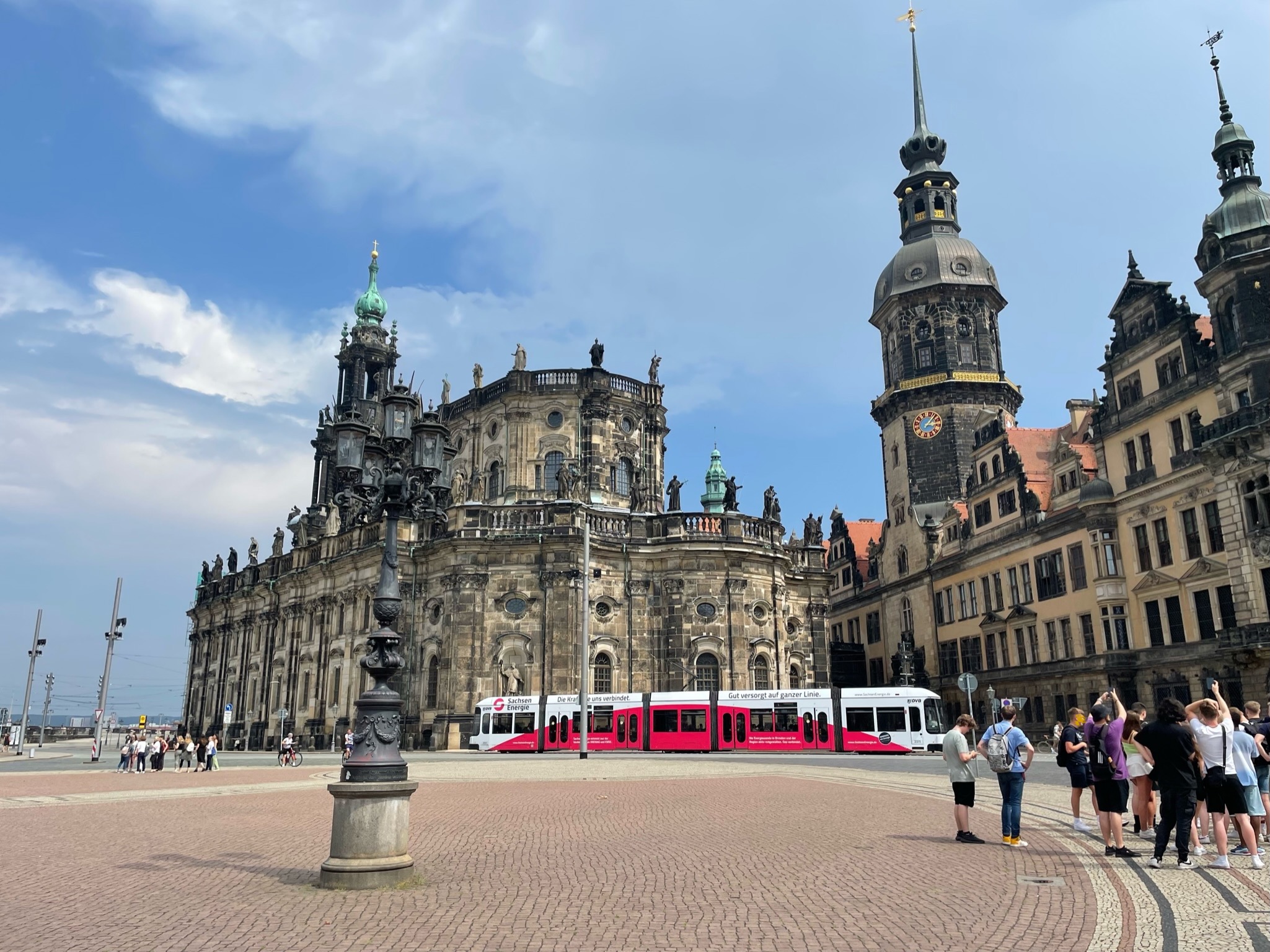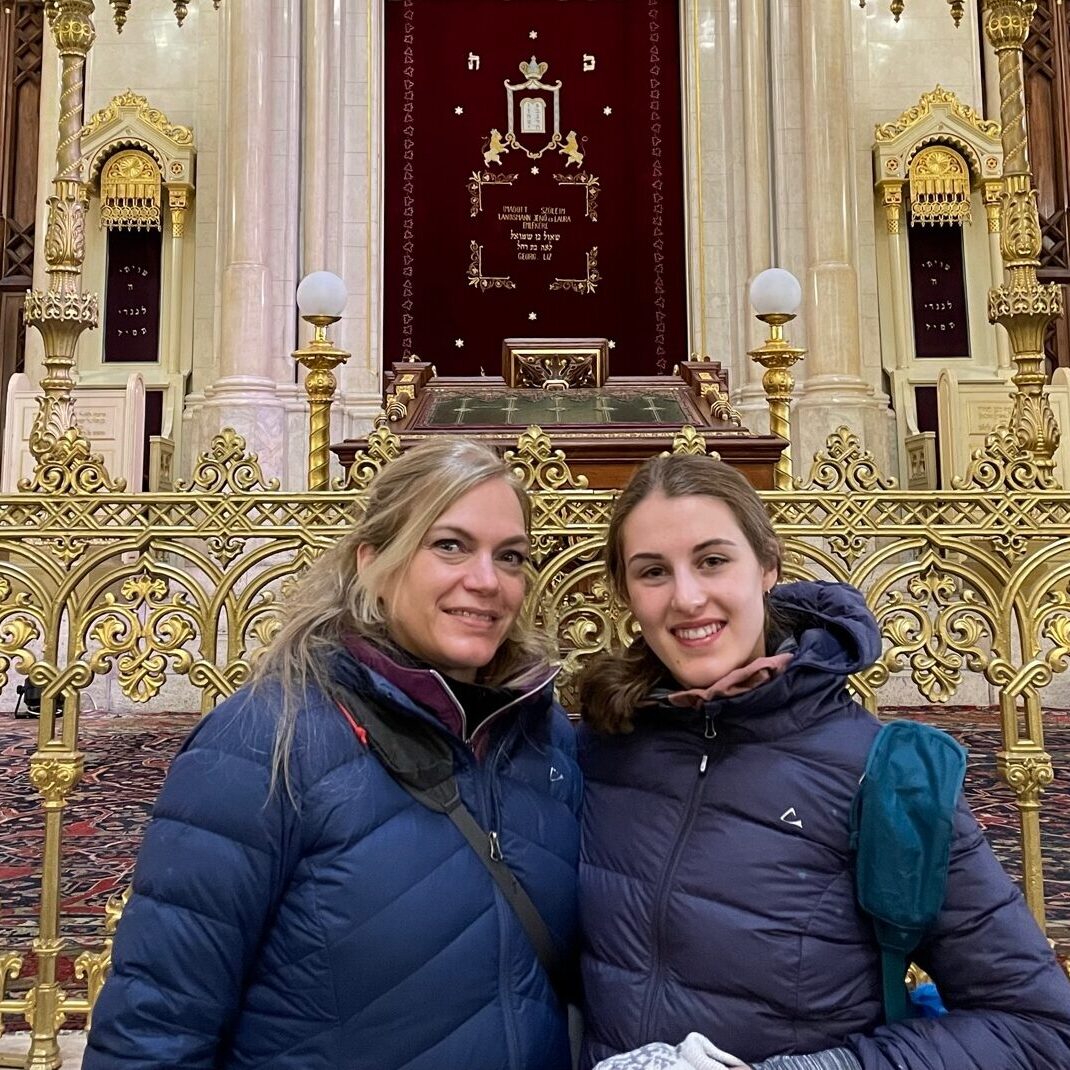Saxony is the northeastern state of Germany bordering with Poland and the Czech Republic. It was part of communist East Germany prior to its collapse and the reunification of Germany in 1989. It has two major cities, Dresden and Leipzig, which are both worth at least a day of sightseeing. Saxony might sound familiar: that’s because the Anglo-Saxon line of royalty in the UK actually came from Saxony!
Using Dresden as a home base, this itinerary covers one day in Dresden, one day in Leipzig, and a day trip to Rakotzbruke, Görlitz and the Bastei Bridge, and is perfect for first time visitors. We stayed in Dresden for all three nights, taking day trips by train and car from there. You could just as easily stay in Leipzig depending on your level of interest, although there is possibly more to do in Dresden if you have free time in the evening.
Download a list format of this itinerary below.
We visited Saxony in July 2022. Like many of our itineraries, this trip relied on full days with early mornings and late nights, however, we encourage travellers to go at their own pace, trying to maximize the sights without sensory overload.
DAY 1: DRESDEN TOWN, ROYAL PALACE, FRAUENKIRCHE
9am: Arrive in Dresden

We arrived in Dresden from Berlin on an early train, dropped our bags off at our hotel, and thus were able to get in a full day of sightseeing. If you arrive in the afternoon or evening, see what you can, spend the night, and start sightseeing the next day.
10am: Orientation to Dresden
Dresden is divided in two parts: Neustadt (new town) and Altstadt (old town). These names refer to when the area was founded, not the age of the buildings. Dresden was levelled during WWII and very little was rebuilt during the DDR communist times. Since then, Dresden has been revitalized and rebuilt to its former glory.
Neustadt is a great area for restaurants and hotels. Altstadt is where you will find the museums and other tourist attractions. In Neustadt, find Kunsthofpassage, a chain of pleasant courtyards. Then, walk into the Old town, noting the locations of the Royal Palace, Main square, and Frauenkirche.
11am: Royal Palace
Dresden was once the capital of the Saxon monarchy, and this palace was the centre. This building has been entirely rebuilt since its destruction in WWII. We visited both the main Royal Palace and the Historic Green Vault, which is the most impressive exhibition. There are other exhibitions open to visitors at the Royal Palace as well. Admire the beauty of the Saxons’ collection and learn about their rich history.

Find more information about the sections of the Palace available to visit on their website here.
Book your tickets online to reserve your entry time to the Historic Green Vault, as it may sell out.
1pm: Mural outside the Royal Palace
Once you’ve toured the buildings, head back outside and look for a gold mural covering the exterior building. This very long mural covers the history of Saxony’s royalty and is quite the sight to behold.
1:15pm: Frauenkirche

This church is Dresden’s highlight. Completely destroyed in the WWII bombings, this church sat in a pile of rubble until the reunification of East and West Germany in 1990 and has since been rebuilt.
2pm: Mathematics-Physics salon
This museum displays the scientific tools and inventions throughout the ages. Globes, clocks, and telescopes abound with their fancy gilded gold. This museum is a charming spin through the evolution of mathematics and physics through the ages.
4pm: Kulturpalast mural
Walk to the Kulturpalast to see another mural from a different time period: the communist days of the DDR (East Germany). This is a stark contrast in style to the lavish royal mural in the Royal Palace. Notice the use of red as a political statement. It’s quite shocking that this mural has not been painted over.

You’ll then come to the Altmarkt, the old market square. Nearby is a bombed-out church that has been partially rebuilt and is worth going into.
Evening: Dinner and/or entertainment
Find a restaurant for dinner, choosing from German or international fare. We ate at the Sophienkeller, a delicious medieval-themed restaurant.
In the evening, you can stroll, shop, or seek out entertainment. Dresden has excellent opera and philharmonic orchestras housed in architectural wonders for venues. You can also seek out church concerts, or other places like restaurants or bars.
DAY 2: RAKOTZBRUCKE, GORLITZ, BASTEI BRIDGE
This day trip was adapted from EarthTrekkers. You can find their original article here.
Rent a car for the day from Dresden or Leipzig for the easiest access to these destinations.
8am: Pick up car
Pick a rental car company that opens early and closes late. We picked up our car right at 8am in order to make the most of the day. We used Europcar and had a good experience.
9:30am: Rakotzbrucke

This is a very instagrammable site that is probably a bucket-list destination for many. The bridge is located in Rhododendron Kromlauer Park. There is a paid parking lot off the side of the road with access to bathrooms for a fee (the bathrooms were quite clean). Walk across the highway and a short stroll through the woods takes you to the bridge. There is a viewing point where you can take a photo of the bridge over the calm pond. The reflection of the bridge in the water makes a perfect circle (half of the bridge over the water and half that appears to be in the water). Although it looks medieval, it was built during the 1800s. You can linger and walk along the trails, but there isn’t too much else to see.
10:30am: Görlitz and Zgorzelec

From the bridge, drive to the town of Gorlitz, located on the border with Poland. We used a parking lot on Obermarkt, but there is a lot of other paid parking available if that one is full.
Gorlitz is a beautiful town, situated just across the river (and border) from Zgorzelec, Poland. In Gorlitz, explore the Obermarkt and Untermarkt (upper and lower market square), visit the stunning St. Peter and Paul Church, and climb the Dicker Turm (fat tower). We also found a lovely Christmas store with some unique ornaments and lots of other quaint little shops to peruse. We also recommend also take a stroll across the river and step into Poland for lunch.
12pm: Lunch in Zgorzelec, Poland
There is no border control as Germany and Poland are both Schengen countries. We ate at Restaurant Przy Jakubie, located on the river just across the bridge. This is your opportunity to branch out from German food to Polish food for a day. Our meal was delicious and very affordable. Note that Poland uses the Zloty for currency but the restaurant accepts Euros or credit card. After lunch, wander around the town and head back across the bridge to Gorlitz.
1:30pm: Drive to Saxon Switzerland National Park and visit the Bastei Bridge

It’s about 1.5 hours to our final stop: the Bastei Bridge.
If you are a fan of shopping, take some time to visit the outlet stores just outside of Görlitz on the way to the next destination. We were driving by and saw the giant Birkenstock outlet sign, and knew we had to stop. Six pairs of Birkenstocks later, we were back on the road!
Saxon Switzerland National Park is not in Switzerland as the name might make you think, but rather it is close to the Czech Republic. This national park has some absolutely stunning landscapes. There are many beautiful hikes that can be done from here; in fact, depending on your interests, you might want to spend the whole day in the park. There is lots of parking available (we parked in a lot on Basteistrasse) and you will likely see lots of people with their campers.
We visited the Bastei Bridge which is the site of an old medieval castle. The views from the bridge and old castle ruins are amazing.

6-7pm: Return to Dresden
It’s about an hour back to Dresden. Return your car and spend the evening having dinner or strolling.
DAY 3: LEIPZIG
8:30am: arrive in Leipzig

We took the train in from Dresden (about 1 hour) to Leipzig. If staying in Leipzig, this day requires no travel. Get your bearings and stroll the city. Leipzig has a lot to see but we narrowed it down to the sites in this itinerary that were of interest to us.
9am: Café Riquet
This historic café has an unmatched ambience and is the perfect place for your morning coffee and cake.
10am: Monument to the Battle of the Nations

Take the tram from the train station to get to the monument. This monument was built to honour the battle in which Austria, Prussia, Sweden, and Russia banded together in order to defeat Napoleon’s army at the Battle of Leipzig. This huge monument remembers this historic time. You can enter and ascend the monument and admire the massive statues.
11:30am: Leipzig’s Runde Ecke Stasi Museum
Head back on the tram to the old town centre. This museum is built in an old Stasi prison. The Stasi were the East German communist police, and were known for their brutality. This museum takes you from one cell to the next, telling you about the Stasi’s control over everyday life, and what is was like to be in prison.

This is the most interesting and well done exhibit on Stasi we have visited. Note that although the audioguide is in English most of the exhibit writings are in German.
Lunch: Bakery or market
By chance, we were in Leipzig during a wine festival so we ate lunch from one of the vendors (bradwurst and käsespätzle) in the main town square. There are lots of restaurants lining the town square that provide the perfect location to take it all in while you eat.
1pm: Bach museum
Leipzig was home to famous Baroque composer Johann Sebastian Bach. The Bach museum is housed in a building across from Bach’s original house (due to the destruction of the original house). Learn about Bach’s life and music and see some relics from his time as organmaster of St. Thomas Church.

2:15pm: St. Thomas Church
Next, visit the church where Bach led the choir and played the organ. The Thomanerchor boys’ choir has been around since Bach’s time and often perform – check the schedule online and plan your day around their performance if they are there.
The concert we attended was lovely. It was crowded and we could not see the boys singing but that didn’t matter as their beautiful voices resonated throughout the church. Note that unless you sit in the centre of the nave near the altar (which was reserved for members of the church during our visit), you will never see the choir as they stand by the organ at the rear balcony.
4pm: Rathaus museum

Rathaus means city hall in German. This city hall contains a small exhibit about Leipzig’s history and was incredibly interesting. We highly recommend a visit.
6pm: Dinner
We chose to return to Dresden for dinner. You can also find a restaurant for a relaxing evening in this beautiful city.
THE BIG PICTURE
Saxony has rich history, beautiful landmarks, and nature. It is an often forgotten corner of Germany but you will not regret visiting. Saxony makes a great side trip on the way to or from Berlin which is what we did. Dresden and Leipzig are underrated cities that are easily deserving of full days, as designed by this itinerary. However, it is worthwhile to choose one city as an interesting (and long) day trip from Berlin. For more on Berlin, check out our Ultimate 7-day itinerary in Berlin.
If you have any questions about this 3 days in Saxony itinerary, please leave us a comment or contact us directly!







